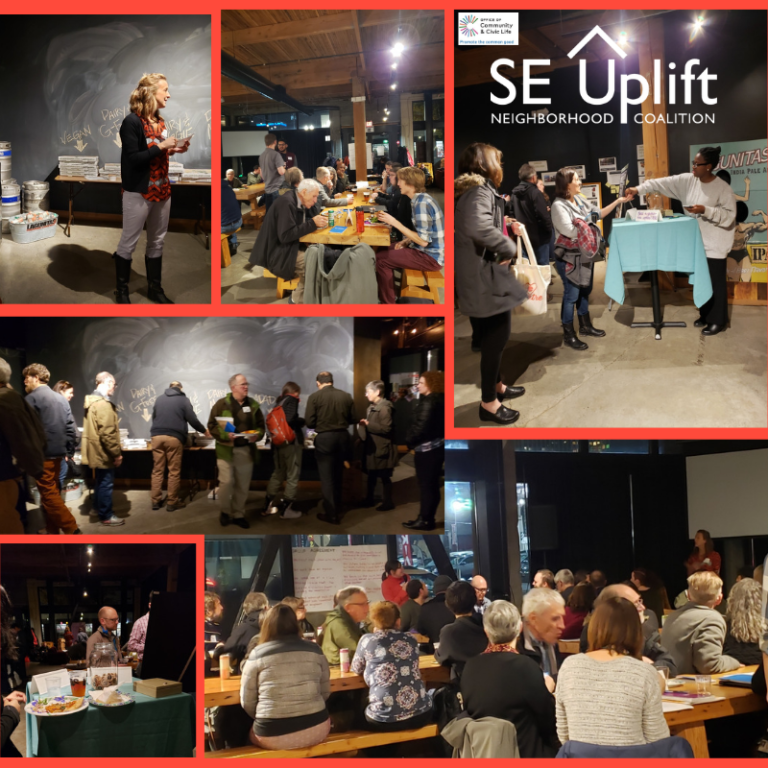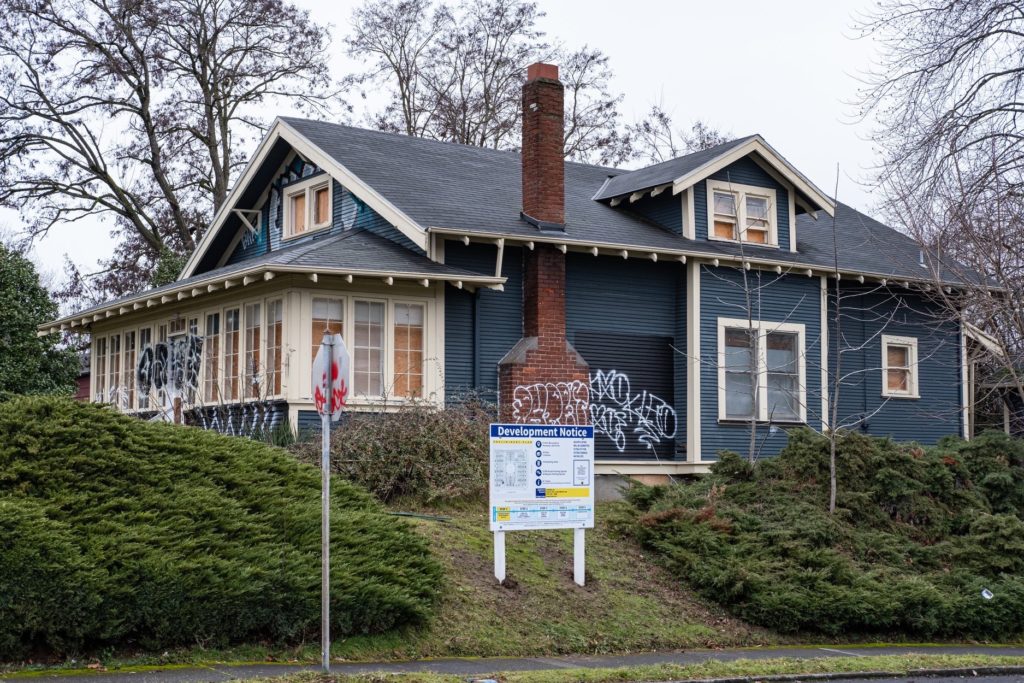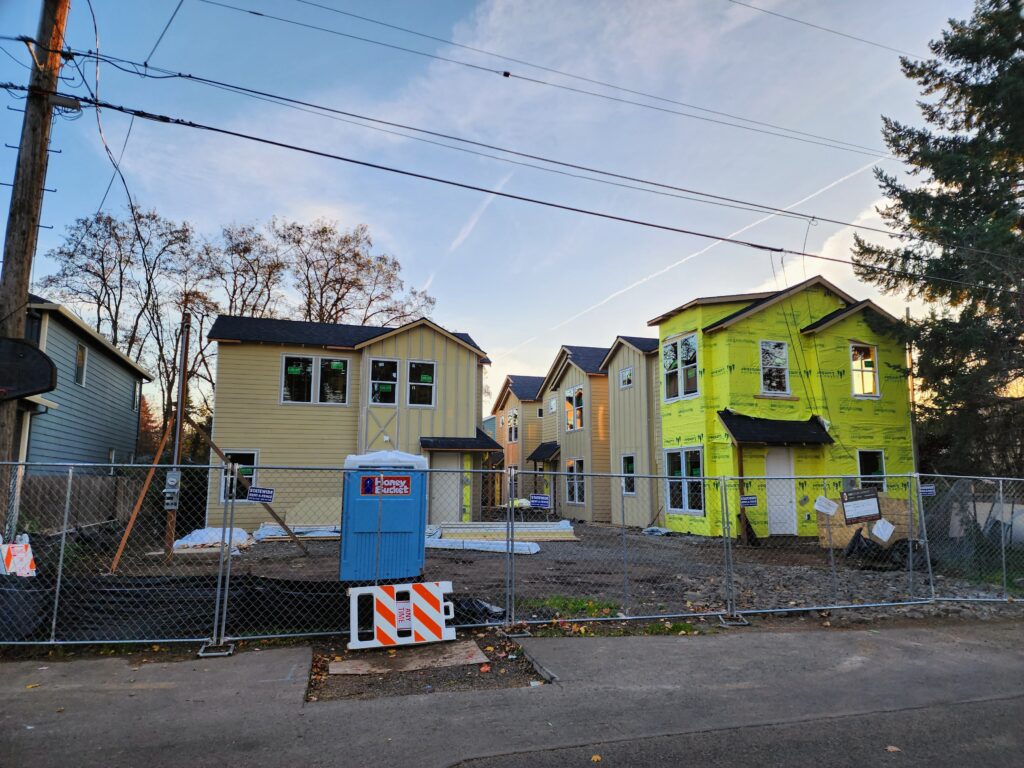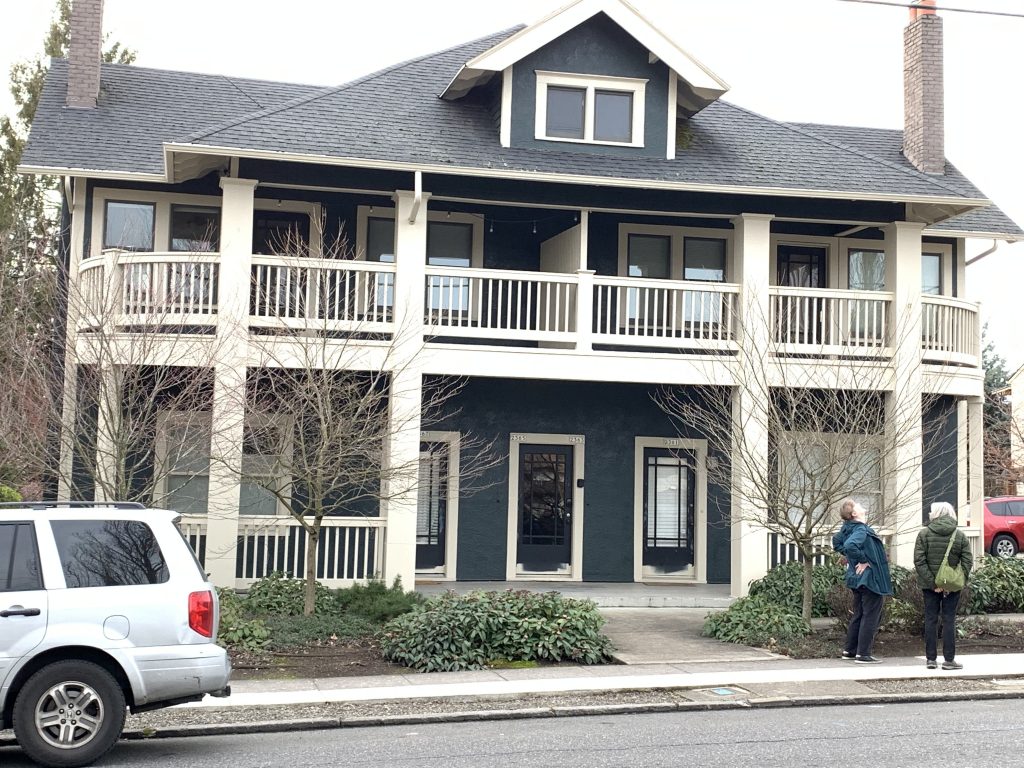Land Use & Transportation: Neighborhood Association Representatives

SE Uplift’s Neighborhood Planning Program works directly with neighborhood association volunteers to respond to neighbor questions about land use and transportation issues, city notifications, and to support their advocacy efforts.
If you are a new or long-time Land Use or Transportation Representative for your neighborhood association, browse the relevant resources below to get started and learn more. Also, connect with the Neighborhood Planning Program Manager for an orientation on your role.
The Land Use and Transportation Committee (LUTC) is a great resource for learning about active land use and transportation planning, projects, and advocacy in the district.
Orientation Packet
New Land Use/ Transportation Representative for your neighborhood association? Get started in your role today by reviewing this packet.
Diversity, Equity, Inclusion & Access (DEIA)
As Land Use Representatives, you will interface with, and work to change, government institutions, systems, policies and laws. Most of which, because constructed long ago, don't serve everyone equally. We hope you will speak up, break down, and help us rebuild the racist institutions, systems, and structures we operate in now. See where SE Uplift stands.
Advocacy Support
Now that you're the point person for your Neighborhood Association, you may need some help doing advocacy.
Project Funding
Financial resources for infrastructure projects can come from a variety of places like health systems, active transportation organizations, and more. Check in with SE Uplift for more information on where to start.



City Notifications
Overview: Neighborhood Associations (NA) currently receive many notices by mail from multiple city bureaus. Most come from the Bureau of Development Services (BDS), but can come from the Portland Bureau of Transportation, Parks, and more. Each notice has specific (and slightly different) parameters that neighbors may ask about.
Your Role as the Land Use/Transportation Chair: There are no set requirements for how a Neighborhood Association must respond to notices. Notices are intended to create awareness and share information with people directly impacted, and NA receive copies in order to answer questions and respond to concerns. Representatives can share notices at monthly board meetings, on their website, or via social media if they choose. Action or appeals typically happen at the request of specific neighbors who are impacted directly or if the NA wishes to do so. Additional information and resources about notices below.
Common Notices Mailed to Neighborhood Associations
The three most common notices mailed to Neighborhood Associations are listed below and are available to the public online. Each notice type has a different timeline and appeal process which is included on the notice. Links below will take you to current and pending notices.
Matrix of all Notices sent to Neighborhood Associations
Neighborhood Associations currently receive many notices from City Bureaus for a variety of land use & transportation related activities.
Review this matrix to understand the types of notifications sent by the City of Portland, who sends them, where they are sent, and why.
Neighborhood Contact for Large Developments
This notice process is the most proactive and provides an opportunity for people who live, work or otherwise pass by a development site to learn about a new project before the owner submits for permits or applies with the city.
Your neighborhood association can choose to have an active role in this process.
Finding Land Use & Transportation Information Outside of Notices
Notices are one way of getting information about what is happening in your neighborhood. However, signing up for project-specific listerves and City notifications are a good way to know when to weigh in on land use & transportation decisions and policy. Your neighborhood profile contains a summary of public notices. Additionally, anyone can explore Portland Maps’ Gallery for neighborhood specific development, environmental, utility, transportation, and more by neighborhood or city-wide.
Helpful Resources
PortlandMaps: View maps from the City of Portland with zoning, permit, and demographic information about crime, schools, parks, properties, transportation, the environment and more.
Portland Map App: Future plans and policy that impact land use. Projects are typically under review and public can make comments through this site during open comment periods.
Next Portland: Writes about large projects and major alterations happening in Portland that are in the design phase or under construction.
BPS Project Updates: The Bureau of Planning & Sustainability (BPS) provides a monthly snapshot of land use planning work going on in the City. Project Updates are posted on this site mid month.
Common Contacts
Government agencies are there to work with community, including your neighborhood association! If you have a question or a concern, do not hesitate to contact the appropriate agency. Here is a list of agencies you may be in touch with in your role as land use chair.
The Bureau of Development Services (BDS) oversees current planning including zoning, code enforcement, and building permits. Essentially they are the implementers of our land use rules and laws. If you or your neighbors have questions about what is allowed on a property, related to zoning & use, schedule a meeting or call 503-823-7300.
They are also the agency that sends out the land use notices you will receive. You can always contact the planner listed on the land use notice if you have questions or need further information. If neighbors are concerned that there may be a code violation for a specific property, you can direct them to report it online or by calling 503-823-2633.
The Bureau of Environmental Services (BES) handles citywide watershed management, wastewater treatment, sewer lines and stormwater projects.
You may hear from the bureau when it is engaged in a large scale project or something very specific impacting a property.
While BDS implements the land use “rules”, the Bureau of Planning and Sustainability (BPS) creates the rules through planning and policy development.
BPS is useful for getting zoning code, maps and information about comprehensive planning. BPS provides district liaisons and works on on-going planning projects, studies and district plans.
Civic Life provides neighborhood, business associations, and coalitions contact and meeting information, demographics, maps, and general information including mediation services.
Neighborhood Association mailing, meeting, and contact information is available in the “Neighborhood Directory“. Neighborhood leadership information can be updated by submitting a request using the form included on each neighborhood profile.
The Community Safety Division works with Council and public safety bureaus to develop equitable and accountable emergency response innovations and a holistic plan to modernize community safety. Violence Prevention Programs, Safe Blocks Program, Rose City Self-Defense, and more are available to work with your group in promoting safe, inclusive, and livable neighborhoods. The response model is grounded in your community’s needs and capabilities.
Metro is our regional government. They manage investments in regional parks, transportation, and land use. Not to mention managing waste reduction and the Oregon Zoo. They conduct outreach for large scale land use and transportation funding and project planning.
Portland Bureau of Transportation (PBOT) is in charge of transportation plans and projects, street maintenance operations and new infrastructure construction.
If neighbors have a safety concern or an idea for a transportation improvement, you can direct them to report it to (503) 823-SAFE.
Portland Parks and Recreation (PPR) manages parks, natural areas, community centers, dog parks, pools, and other community activities. PPR may contact neighbors and neighborhoods to share information about programming, bond measure updates, and to share information about future parks projects. Urban Forestry is located within the Parks bureau.
The Public Environment Management Office (PEMO) is dedicated to swiftly and effectively delivering solutions to livability-related issues in Portland’s public spaces by coordinating resources in an efficient manner. Through the Problem Solver Network, PEMO and neighborhood collaborators address livability concerns in the public space outside of unhoused people (connect with the Impact Reduction Program). These groups convene every two weeks at focused online meetings to discuss concerns and opportunities with City staff. The meetings, lasting 30 minutes, are designed to be practical and solutions-oriented, emphasizing partnership and accountability. You and your neighborhood may request invitations to these Problem Solver meetings and schedule site walks to discuss issues in-person.
Partnership Resources
Racist History of Land Use Planning: ‘Segregated By Design’ examines the forgotten history of how our federal, state and local governments unconstitutionally segregated every major metropolitan area in America through law and policy. Even as neighborhood association representatives, we cannot do this work without understanding the lasting impacts and real trauma that land use & transportation policy has had on our BIPOC neighbors.
History of Racist Planning in Portland: Oregon has a long and unpleasant history of using land use policy to exclude non-whites from owning land and living in certain areas of the City. These policies and laws have had lasting impacts that determine who is living in your neighborhood today.
Connecting with Renters in your neighborhood: Neighborhoods in our district have anywhere from 20%-88% percent of neighbors who are renters. These neighbors’ voices and priorities are often underrepresented in SE Uplift advocacy efforts. For an understanding of tenant priorities and needs, visit the Community Alliance of Tenant’s website
Connecting with Historically Marginalized Groups in your Neighborhood: Tips for connecting with groups and individuals who have been historically marginalized by government institutions and systems. These folks may not make up a large demographic in your neighborhood, but their voices deserve to be heard and needs supported.